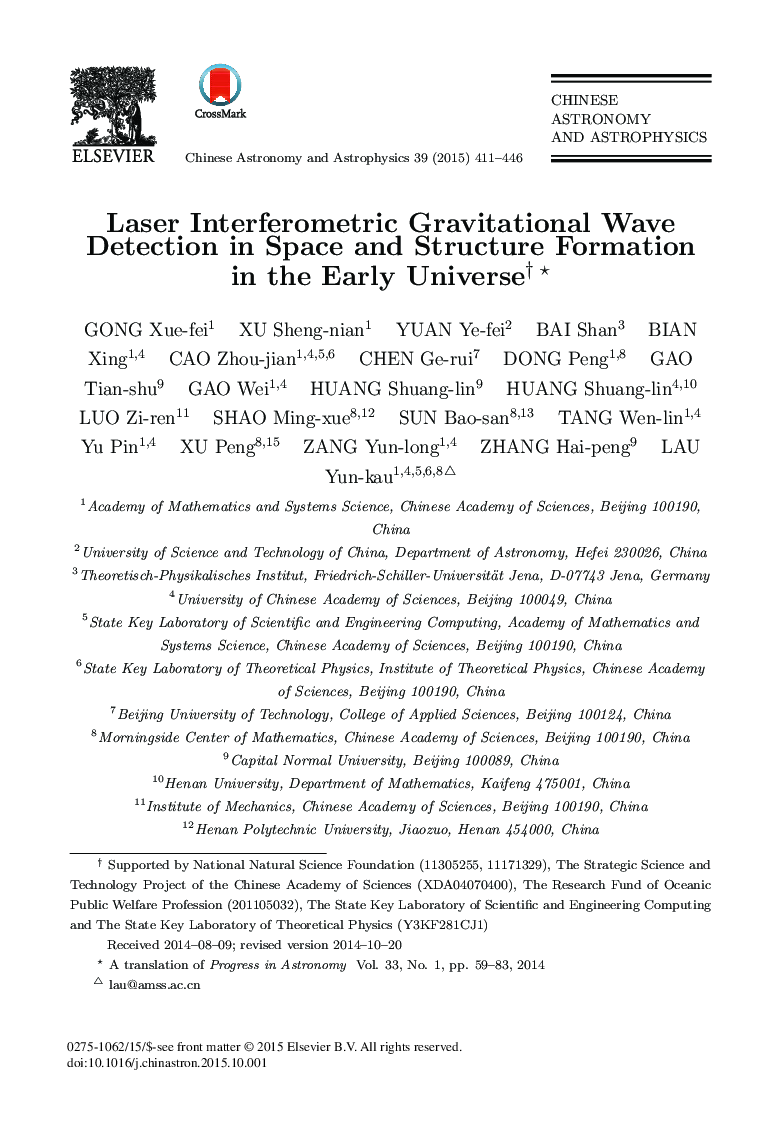| Article ID | Journal | Published Year | Pages | File Type |
|---|---|---|---|---|
| 1771773 | Chinese Astronomy and Astrophysics | 2015 | 36 Pages |
Laser interferometric gravitational wave detection in space holds the promise of being a new window to probe and address certain key problems in astronomy and cosmology, such as stellar evolution and galaxy formation in the early Universe, co-evolution of black holes and galaxies, etc. After two phases of feasibility study commissioned by Chinese Academy of Sciences and under the support of the Pioneer Explorer (Xiandao) Program, by considering relative merits between scientific significance and technological viability, a preliminary Chinese mission design with measurement waveband from mHz to 0.1 Hz is put forward, with the primary drivers being intermediate and supermassive black hole binaries at high redshift as well as intermediate mass ratio inspirals within dense star clusters in our local Universe. On the basis of the mission design, the scientific significance of gravitational wave detection in space as a possible new probe in astronomy is briefiy discussed. The primary science drivers together with the potential detection capability of the Chinese mission design will also be touched upon.
